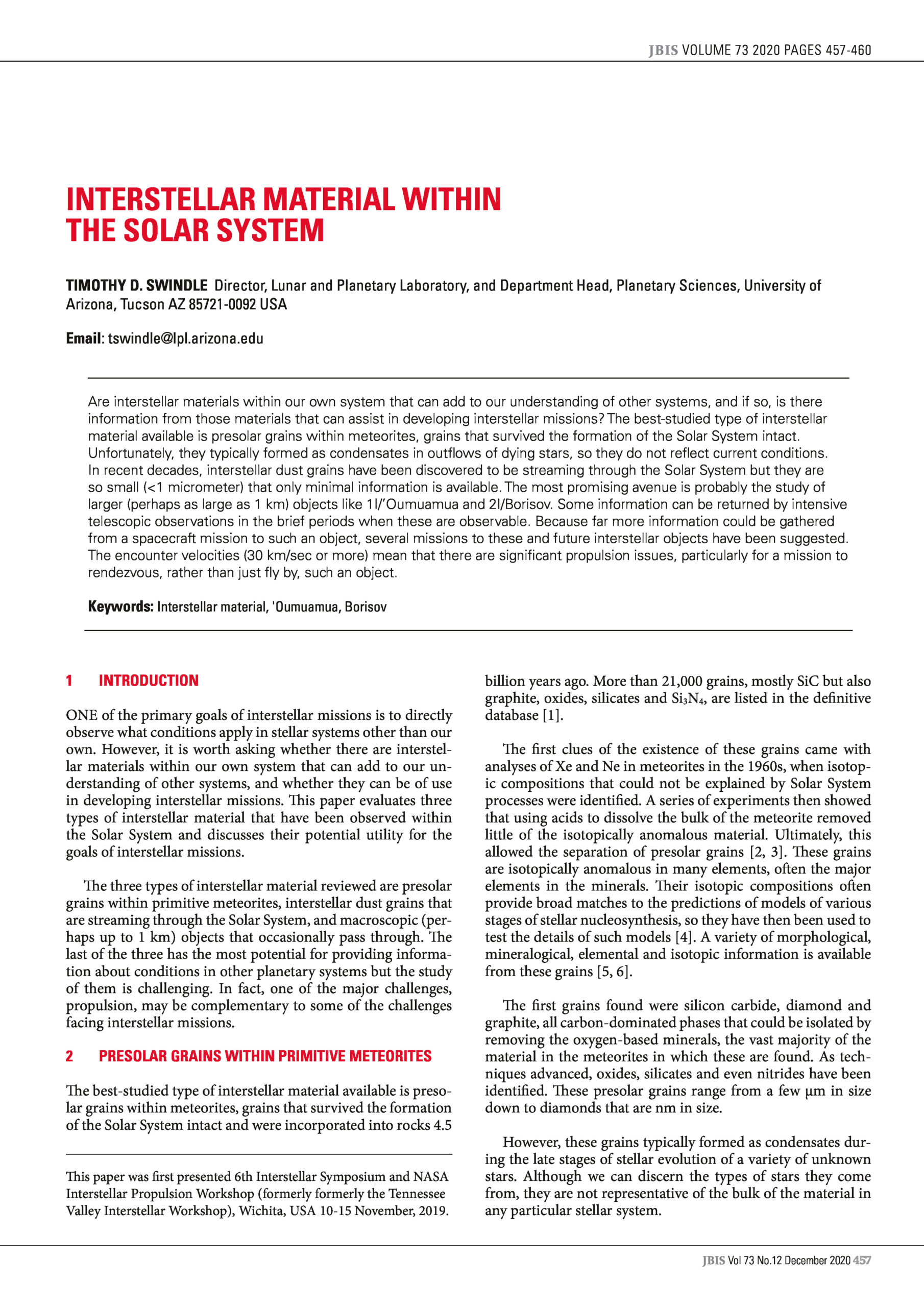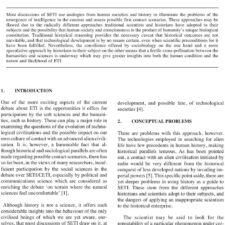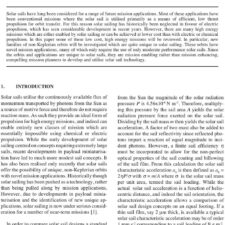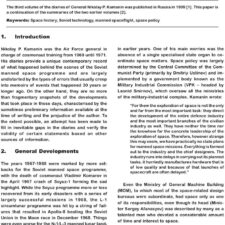Interstellar Material within the Solar System
£5.00
T. D. Swindle (2020), JBIS, 73, pp.457-460
Refcode: 2020.73.457
Keywords: Interstellar material, ‘Oumuamua, Borisov
Abstract:
Are interstellar materials within our own system that can add to our understanding of other systems, and if so, is there information from those materials that can assist in developing interstellar missions? The best-studied type of interstellar material available is presolar grains within meteorites, grains that survived the formation of the Solar System intact. Unfortunately, they typically formed as condensates in outflows of dying stars, so they do not reflect current conditions. In recent decades, interstellar dust grains have been discovered to be streaming through the Solar System but they are so small (<1 micrometer) that only minimal information is available. The most promising avenue is probably the study of larger (perhaps as large as 1 km) objects like 1I/’Oumuamua and 2I/Borisov. Some information can be returned by intensive telescopic observations in the brief periods when these are observable. Because far more information could be gathered from a spacecraft mission to such an object, several missions to these and future interstellar objects have been suggested. The encounter velocities (30 km/sec or more) mean that there are significant propulsion issues, particularly for a mission to rendezvous, rather than just fly by, such an object.





